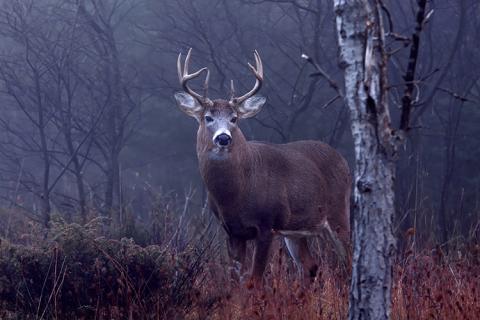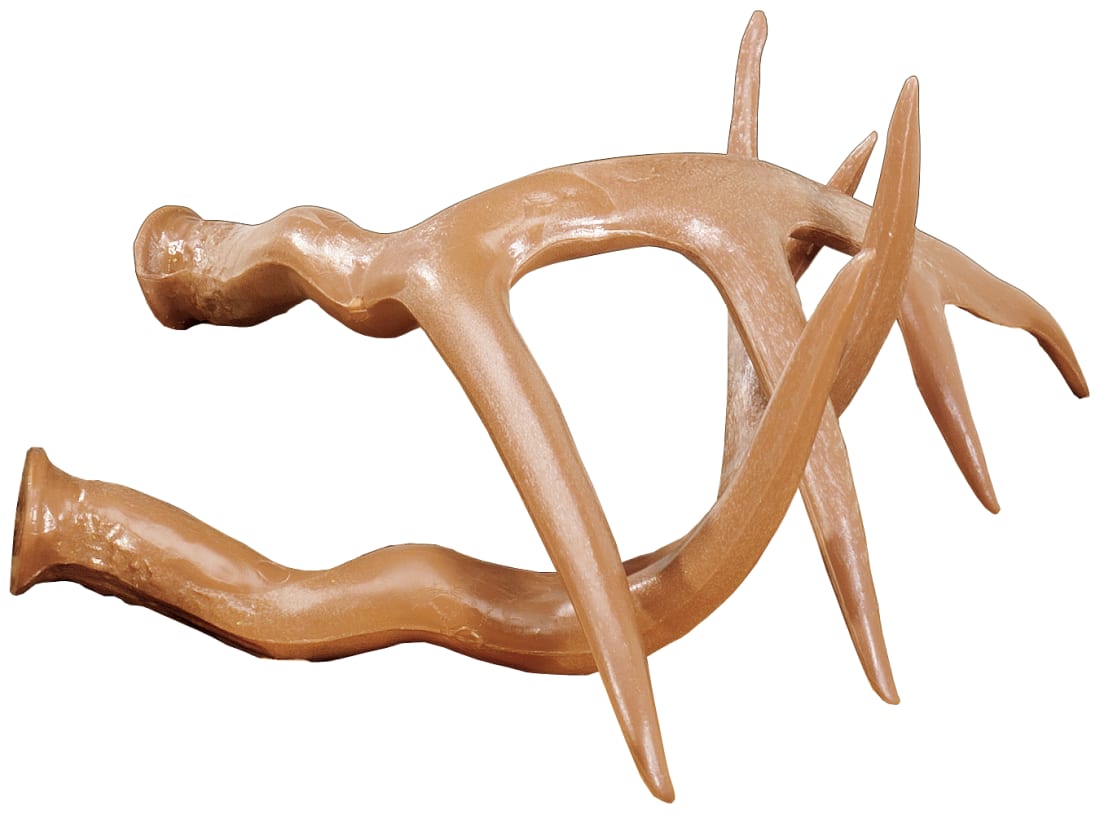
How to hunt every phase of deer season’s most magical time.
Article by Andrew McKean
The main thing you need to know about the rut, which has been studied and defined to within inches of its death, is that for a few magical weeks every year, it finally puts you on even footing with deer.
For the rest of the year, deer have the upper hand. They smell you coming. They see and hear you long before you spot them. They are equipped to survive in landscapes that are mostly foreign to us. And, despite our technological advantages, they manage to avoid us.
Then the rut erupts, and everything changes. Bucks lose their well-honed inhibitions. They get careless. They get single-mindedly focused on breeding. And we get the rare chance to encounter bucks with their guards down, and this includes the oldest, most nocturnal, and savvy bucks in your area.
That’s the magic of the rut, which (with some exceptions) starts around Halloween and continues through Veteran’s Day. If you have the chance to choose when to hunt, it should be between those cardinal dates. Here’s how to make the most of each phase of deer season’s best days.
What The Rut Really Is
If you’re the sort of hunter who wants just a little bit more information to inform your decisions, however, then it may interest you to know why the rut happens at such specific and predictable times every year. It’s because whitetail deer have a roughly 200-day gestation period. As a prey species, deer are engineered to give birth all at once, so that the area in which they birth is swamped with fawns, the better to ensure that at least some survive predation. The prime fawning period coincides with good forage, both to feed lactating does and to hide young fawns.
So, if you backtrack 200 days from early June, when vegetation growth is at its peak across most of the whitetail deer range, then you’re looking at mid-November. And it turns out, that’s precisely when most does are bred across their range. The rut is simply the preamble to breeding, the fortnight in which bucks roam widely looking for ready does, and the urge to breed makes them vulnerable to human hunters.
We’ve already established that this is the time to drop everything and hunt, but how do you know where and how to encounter bucks? Adjust your tactics to the varying phases of the rut.
-
Staging Phase
This is the preamble to the preamble, the couple of weeks in which bucks are starting to get active but don’t quite have the commitment to break away from herds and roam widely in the daytime. Starting in mid- to late-October, you’ll see younger bucks running amok in a herd of placid does and fawns. They’re feeling it, and even though there’s little outward sign that the rut has started, this signals the beginning.
How To Hunt: This is really an extension of late-summer and early-fall patterns, with deer using core forage (think uncut soybeans, corn, and alfalfa) and still maintaining groups of does and their young-of-year fawns. Find the quality forage and you should find does.
Mature bucks are probably not with these visible deer yet. But watch for younger bucks to start to run around the herd, milling the does and making them nervous, as they try to find an early cycling doe. This stage generally extends into the first days of November.
Pro Tip: For a week to 10 days in late October and early November, rattling is gravy. Knock some shed antlers together and watch bucks take notice. Not all will charge into your location, but younger bucks will almost surely come close to investigate what they think is a couple of bucks fighting.
flextone Battle Bones Rattling Call System
The flextone® Battle Bones™ Rattling Call System delivers the realistic sound of 2 mature bucks fighting with both sides of the antlers of both bucks, instead of the more common 1 antler apiece method, to greatly increase the distance the sound carries.
Primos Fightin' Horns Deer Call
Sound like fresh shed antlers. Duplicate all buck fighting sounds from light sparring to all-out battles. Unique design for safe and easy rattling.
-
Chase Phase
The next phase is the one that rewards hunters who make time to get out the first and second weeks of November. It’s the fortnight during which mature bucks start to roam in the daytime, as they move from doe herd to doe herd in search of breeding partners. The key to scoring during this phase is finding the does, and ensuring that you don’t destabilize them by winding or spooking them.
How To Hunt: Play the doe herds carefully. Set up in a spot where you can see the does as well as entry routes to their location from mid-day bedding areas, and then simply sit and watch. There’s a good chance you’ll encounter a buck moving through, and you can confirm the seasonal cycle if you see the buck moving from doe to doe.
If you’re hunting the morning, set your stand in an area where you can intercept deer moving from food to bed. In the afternoon, get in a spot that overlooks trails leading from beds to fields.
If you’ve identified a target buck for your area, either through personal observation or trail-camera footage, this is the time to identify him on the hoof. You can try decoying or calling, and making mock scrapes tends to work well during this early November time frame. All those tactics help put you in touch with a target buck, but there’s no substitute for simply spending time in the field, because it’s also likely that if you’re hunting near concentrations of does, an entirely new buck you haven’t seen before may show up as they travel the landscape looking for the first cycling does.
Pro Tip: If you find a rub line or a scrape, set a stand downwind. Bucks will be checking these signposts during this chase phase.
WoodHaven Custom Calls The Closer Doe Bleat Deer Call
The Closer Doe Bleat Deer Call from WoodHaven® Custom Calls is your ticket to a successful hunt! Effective all season long, it produces realistic bleats and bawls of a young deer to draw in mature does as well as realistic estrous bleats of a doe to entice rutting bucks.
Primos Rut Roar Deer Grunt Call - Black/Green
"Speak the Language" with the Primos® Rut Roar Deer Grunt Call. The Rut Roar floods the woods with realistic, precision-tuned deer grunts, designed for accurate calling while deer hunting from the ground or from above.
-
Lock-Down Phase
This is when the actual breeding gets done. It’s the core of the rut, but it’s actually not as productive for hunters because deer don’t move much. Mature bucks have settled down with a crowd of receptive does, so you can’t count on their careless movement as you can during the chase phase.
However, there’s one great advantage to hunters during lock-down, and that’s the distraction of bucks. Once a buck is fixed on a doe, hunters can often get away with behavior that would doom them the rest of the year—being careless with the wind, snapping twigs, and moving aggressively. Don’t overdo this, but if you see a big buck intent on a doe, go for him. The other benefit to hunters is that does often dart and duck away from bucks, and often a frazzled doe will lead a buck right past your stand.
How To Hunt: Bucks may be distracted, but does are still trip-wire aware, so watch your wind. This is a good time to set up on edges, especially those overlooking secluded clearings and fields. Breeding typically happens in the open but primarily along edges, like treelines and fencerows. Also hunt the edge of weather fronts; breeding activity intensifies just prior to a cold front and just after a November storm breaks.
Pro Tip: Sometimes a decoy will work during this time. Use a doe decoy, but set it up right along an edge in sight of openings. Subtle doe-bleat calling can help call attention to your deke.
Flambeau Boss Babe Deer Decoy
Accomplished sculptor C.W. Schiller has created a gem with this Flambeau® Boss Babe Deer Decoy, which has 2 sets of ears (1 submissive, 1 alert). The rear leg is designed to accept scent pads (not included).
Hunters Specialities DOD Dominant Doe Bleat Deer Call
Use deer's natural curiousity this season to bring them to your location with the Hunters Specialties DOD Dominant Doe Bleat Deer Call. Approved by the hunting experts at Drury Outdoors, this call stimulates both the maternal instincts of mature does and the eager curiousity of mature bucks.
-
Post-Rut Phase
All good things must come to an end, and so goes the rut. This is the recovery phase, when bucks are actively feeding to restore calories lost during the chase phase. This is the time to focus on prime food sources, especially as winter weather descends on the area you hunt. You’ll see bucks and does intermingled, but the older bucks may return to their nocturnal habits.
How To Hunt: If you’re a food-plotter, this is the time to concentrate on high-energy forage, such as brassicas and winter rye. In agricultural country, find uncut soybeans and corn. Bigger bucks will spend more time in solitary bedding areas, so set up on trails between those overgrown, brushy areas and prime food sources. Here again, try to hunt the weather. If you can be out before a big winter storm blows in, you’ll see enhanced deer activity. And hunt fields the day after a snowfall or winter storm when deer become more active again.
Pro Tip: Find native fruit sources—wild plums, persimmons, and even neglected apple orchards. Those fruits have sweetened with cold weather, and calorie-desperate bucks will focus on these high-sugar food sources.
Evolved Habitats Dirt Bag Camo Corn Deer Attractant
A powerful deer attractant with a color and texture resembling dirt, Evolved Habitats® Dirt Bag Camo Corn Deer Attractant looks like dirt but attracts deer like crazy. Real shelled corn is pulverized into a fine powder that's blended and colored into an ultra-concentrated super corn mixture that's appealing to a deer's eyes and nose, bringing droves of deer in from afar.
Moultrie Feed Station II
An upgraded version of the renowned and widely popular Feed Station, the redesigned and upgraded Moultrie® Feed Station II Game Feeder improves wildlife feeding while keeping operation simple. Built to hold a 50 lb. bag of corn, protein pellets, or other supplements, this feeder features dual feed ports for up to 2 deer. Each feed port features integrated rain shields and weep holes to keep feed dry.
- 2358 views




))/3423289.json?$Prod_PLPThumb$)
))/2199773.json?$Prod_PLPThumb$)
))/1919852.json?$Prod_PLPThumb$)
))/3073763.json?$Prod_PLPThumb$)
))/3180338.json?$Prod_PLPThumb$)
))/3063614.json?$Prod_PLPThumb$)